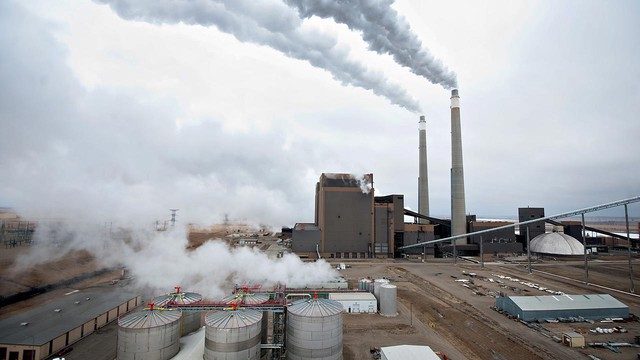Christmann: EPA Picked Coal Emission Number So That Coal Plants Couldn't Meet It

I had Public Service Commissioner Randy Christmann, who is in his first term at the PSC since being elected last year, on the radio this morning to talk about the EPA’s recent visit to North Dakota. The PSC put on a symposium in Bismarck earlier this week and invited the EPA to talk about proposed coal regulations.
Christmann suggested that the proposed EPA regulations are arbitrarily formulated, impossible to comply with and ultimately meaningless in terms of environmental outcomes.
The EPA is “threatening the whole system by requiring carbon capture technology that doesn’t exist,” Christmann told me.
“This is not an attempt to close down power plants,” EPA Region 8 administrator Shaun McGrath told the symposium, according to the Bismarck Tribune. “Coal needs to be part of our energy future.”
Christmann isn’t so sure that’s true. Under the proposed EPA rule, new power plants couldn’t emit more than 1,100 pounds of carbon dioxide emissions per megawatt hour of electricity generated. Currently the average for a coal-fired power plant is 2,250 pounds per megawatt hour. Christmann asked McGrath how the EPA came up with that number, and according to the Tribune “McGrath said he didn’t have the specific data on hand but would be able to provide the PSC with that information.”
Christmann suggested that’s because the EPA based the number on politics rather than any scientific findings. “It seems like they’re just picking a number that can’t be met,” he told me.
What’s worse, the uncertainty created by this proposed rule – and a second rule Christmann says the EPA will announce this summer pertaining to existing power plants – is having a major impact on the buildout of power supply. There is “nothing in the planning stages for new coal plants,” Christmann told me, meaning new electrical generation needs to come from existing plants or from alternative power sources like wind which are far more expensive and seen as unreliable.
That comes at a time when North Dakota’s population and energy demands are growing. A 2012 report prepared for the North Dakota Industrial Commission forecasted electricity demand for oil patch counties increasing by more than 200%.




